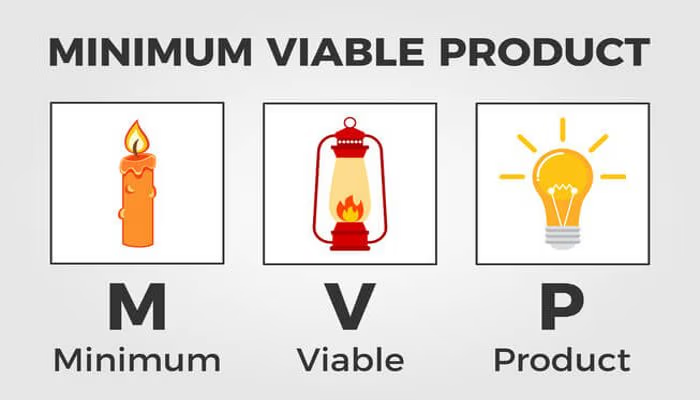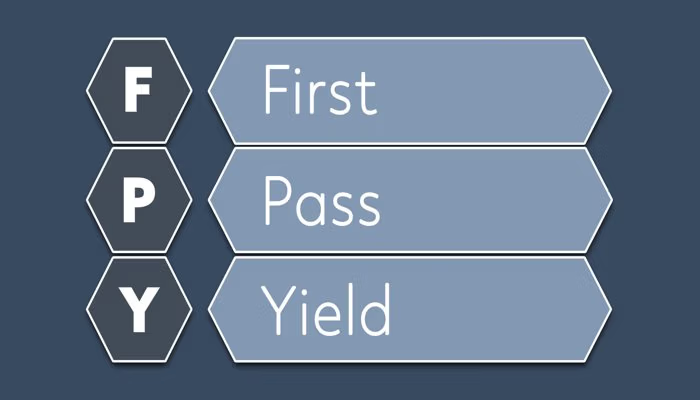Summary: A Minimum Viable Product (MVP) is a strategic approach to launching the simplest version of a new product that delivers core functionality to early adopters. By focusing on essential features, teams can quickly validate a product idea, collect valuable customer feedback, and refine their vision through product iteration. Rooted in Eric Ries’ Lean Startup methodology, this product development strategy minimizes risk, saves resources, and ensures that subsequent iterations align with real market needs. The method accelerates product development and creates a solid foundation for a marketable and successful product. Using a minimum viable product (MVP) to test a business model remains one of the most popular approaches for startup development.
What is a Minimum Viable Product (MVP)?
A Minimum Viable Product (MVP) is the initial version of a product that includes only the essential features necessary to meet the core needs of its users. It is designed to be quickly built and released to gather feedback from early adopters, helping identify potential flaws and user requirements. The MVP approach, rooted in Lean Startup methodology, aims to validate hypotheses and reduce the risk of developing a product that fails to resonate with its target audience. By focusing on the most crucial functionality, an MVP enables businesses to save resources (time, money, and effort) while iteratively improving the product based on real user input. This feedback-driven development process fosters a deeper understanding of customer needs and ensures that further investment is directed toward building a product that aligns with market demand.
Importance of MVPs in Agile Development
Beyond their role as an initial product version, MVPs are strategic tools that drive smarter decision-making in agile development. They serve as a low-risk method to validate ideas, refine product-market fit, and identify priorities based on real-world data. By narrowing the focus to essential features, MVPs ensure teams avoid overengineering while maintaining flexibility for future iterations. This approach not only minimizes wasted investments but also creates a clear pathway to scaling a product that meets both user expectations and business objectives.
How efficiently are you turning ideas into a functional MVP?
Workflow Software helps streamline development, testing, and iteration for faster validation.
MVP vs. MMP, MLP, and MSP: What’s the Difference?
In product development, approaches like MVP, MMP, MLP, and MSP address different goals and stages. These methods are complementary, not exclusive, and organizations often combine them to balance testing, market needs, and long-term strategic goals while delivering value to customers.
Minimum Viable Product (MVP)
Focuses on validation and learning by offering the simplest version of a product with essential features. The goal is to test core assumptions, gather feedback, and ensure the idea has potential before investing heavily in development.
Minimum Marketable Product (MMP)
Takes the MVP to the next level by refining it into a market-ready version with enough features to attract and retain customers. Unlike the MVP, the MMP prioritizes value delivery and revenue generation while maintaining usability and reliability.
Minimum Lovable Product (MLP)
Goes beyond functionality to focus on creating an engaging and memorable user experience. It aims to build emotional connections with users, encouraging loyalty and long-term satisfaction through features that delight rather than just meet expectations.
Minimum Sustainable Product (MSP)
Integrates sustainability and ethical practices into the product, addressing environmental and social concerns. The MSP ensures the product meets modern standards of responsibility while maintaining functionality and user value.
Expected Benefits of MVP
An MVP helps streamline the development process by prioritizing only the core features that provide immediate value. MVP benefits include:
1. Faster Time to Market
By prioritizing core features, an MVP allows you to enter the market quickly and gather feedback faster, speeding up development cycles for future iterations.
2. Cost Efficiency
Developing only the most critical features reduces initial development costs, ensuring resources are allocated effectively for early-stage testing and improvements.
3. Market Validation
The MVP approach helps validate your product concept with real users, allowing you to adjust based on feedback before committing to full-scale development. It also offers the key benefit of gauging customer interest without the need for complete product development.
Common Pitfalls of MVPs
While MVP offers many advantages, certain pitfalls can hinder its effectiveness:
1. Over-Simplification
Stripping down too many features can lead to a product that fails to meet user expectations or lacks sufficient value to attract and retain customers. Teams often fall into the trap of delivering the smallest possible set of features, believing this is sufficient without considering the broader goal of validating business viability.
2. Misjudging Market Fit
Relying solely on early feedback can sometimes lead to misinterpretations, causing a misalignment between the MVP and actual market demands. Additionally, teams may confuse an MVP – which focuses on learning about customer needs and product viability – with Minimum Marketable Features (MMF) or Minimum Marketable Products (MMP), which are driven by the goal of earning revenue. This confusion can result in a product that doesn’t address the right customer problems, despite being “marketable.”
3. Ignoring Long-Term Scalability
Focusing exclusively on short-term goals may neglect the product’s future scalability and the infrastructure needed to support growth beyond the MVP stage. Teams may focus on the “minimum” part of MVP at the expense of ensuring that the product is viable enough to be a foundation for future development. This can lead to a lack of quality, making it difficult to assess whether customers will truly engage with the product in the long term. Moreover, once the MVP is delivered, teams may fail to iterate or make changes based on customer feedback, limiting the product’s potential for improvement.
MVP Development: Step-by-Step Guide
Developing an MVP helps the manufacturing industry validate ideas while reducing risks. By following this framework, you can create a practical, scalable solution that addresses industry challenges and meets customer needs.
1. Analyze the Problem and Target Audience
Begin by identifying the core challenges your product aims to solve within the manufacturing sector. Understanding your target audience’s pain points ensures the MVP directly addresses their needs. This step lays the groundwork for a targeted solution by clearly defining the problem.
- Example: In a highly automated production facility, reducing unexpected downtime through real-time data analysis and precise predictions could be a critical focus.
2. Define Core Features or Characteristics
Determine the essential features that will form the foundation of your MVP. These features should address the problem directly, offering tangible value while keeping the scope manageable. It’s crucial to focus on limited functionality that provides a seamless user experience rather than overloading the MVP with incomplete or unnecessary features.
- Example: A predictive maintenance system might initially analyze temperature and vibration data to identify equipment wear before expanding to other parameters.
3. Conduct Market and Competitor Analysis
Assess existing solutions to identify gaps and opportunities. This analysis ensures your MVP addresses unmet needs in the market and provides a distinct competitive advantage. Highlighting unique selling points, such as increased efficiency or reduced costs, is essential to stand out.
- Example: A novel assembly solution for high-mix, low-volume production could differentiate itself with greater modularity and faster changeover times.
4. Develop a Prototype or Testing Approach
Create a simple yet functional version of your product to validate its effectiveness in real-world scenarios. The prototype should offer enough functionality to demonstrate value but remain cost-efficient to develop. Focusing on viability ensures the MVP is both practical and impactful.
- Example: An automated inventory management system could be tested in a small warehouse section to optimize material flow.
5. Test and Validate the MVP
Launch the MVP with a select group of users to gather actionable feedback and performance data. This testing phase allows you to assess its alignment with customer expectations and operational goals. Ensure the MVP effectively solves a complete user task to maintain its viability.
- Example: A tool for process monitoring could be deployed in a pilot production run to verify its ability to reduce scrap material.
6. Refine and Prepare the MVP for Market Launch
Iterate on the MVP using insights from testing, ensuring the final version delivers a high-quality user experience. By refining both functionality and usability, the MVP becomes a reliable foundation for scaling. It’s vital to avoid half-completed solutions and present a product that meets market demands.
- Example: A digital supply chain management platform is rolled out across international production networks after successful pilot projects.
MVPs in Manufacturing: 10 Minimum Viable Product Examples
These ten successful mvp examples in manufacturing demonstrate how they validate ideas, mitigate risks, and drive scalability. By testing technologies, refining processes, and leveraging real-world feedback, these MVPs showcase the transformative power of strategic experimentation.
1. GE Aviation – Digital Twin Technology
GE Aviation introduced an MVP for its Digital Twin technology by creating a stripped-down version of a product: a simplified virtual model of its aircraft engines. This version allowed real-time monitoring and predictive maintenance, helping engineers identify inefficiencies and potential failures. By validating the product idea, this MVP paved the way for integrating IoT solutions across production systems, improving operational reliability.
2. Tesla – Autopilot
Tesla launched its Autopilot MVP as an early product with basic driver-assistance features like lane centering and adaptive cruise control. Early adopters provided critical feedback, which Tesla used to iterate and validate the demand for the product. This approach improved the version of the product over time and resulted in a scalable, semi-autonomous driving system enhanced by over-the-air updates.
3. Caterpillar – Telematics System for Heavy Machinery
Caterpillar deployed an MVP for telematics by offering a simple product that tracked machine usage and location. This early iteration validated customer interest in remote monitoring while highlighting potential use cases for predictive insights. The MVP’s success guided Caterpillar in building an advanced, marketable product for fleet management across its machinery lineup.
4. 3D Systems – 3D Printing Services
3D Systems tested the market with an MVP that focused on building a product to provide basic 3D printing services. Customers submitted designs, which the company used to produce functioning prototypes. This effort validated the demand for the product and refined the product development strategy for their comprehensive on-demand manufacturing platform.
5. Siemens – Industrial IoT for Manufacturing
Siemens created an MVP for its Industrial IoT solutions by testing an MVP version that equipped select production machines with sensors. This early product monitored parameters like temperature and vibration, gathering actionable data for validation. The MVP demonstrated the scalability of Industrial IoT and informed Siemens’ lean startup approach to large-scale factory automation.
6. Formlabs – Desktop 3D Printer
Formlabs introduced its MVP as a functional but stripped-down version of a desktop 3D printer targeting engineers and designers. This version of a product offered high-quality prints at an affordable price, validating the marketable product and identifying areas for improvement. The MVP’s success helped Formlabs optimize design and establish itself as a leader in desktop 3D printing.
7. Boeing – 787 Dreamliner
Boeing used a scaled-down prototype of the 787 Dreamliner as an MVP to validate a product idea around fuel efficiency and aerodynamics. This early iteration allowed Boeing to minimize risks and improve the final product through iterations. The validated learnings from this MVP shaped the production of one of the most efficient commercial aircraft available today.
8. Toyota – Lean Manufacturing System
Toyota pioneered its MVP for lean manufacturing with a simplified implementation on a single production line. By building an MVP focused on waste reduction and continuous improvement, Toyota validated the product development strategy. This iterative approach transformed production processes and became the foundation of the globally renowned Toyota Production System (TPS).
9. Honeywell – Predictive Maintenance System
Honeywell developed an MVP for predictive maintenance by equipping machines with basic sensors to track conditions like temperature and pressure. This testing an MVP phase validated the concept and demonstrated the potential of IoT-driven analytics for reducing downtime. Feedback from this mvp testing guided Honeywell in refining its scalable solution.
10. BASF – Smart Chemical Manufacturing
BASF’s MVP in smart manufacturing tested a minimum marketable product that used sensors to monitor critical chemical processes. This early product iteration optimized efficiency and reduced downtime in a single facility. The version of your product was scaled across multiple plants based on the success of the MVP, driving quality consistency and cost savings.
FAQ | Minimum Viable Product (MVP)
What is a Minimum Viable Product (MVP)?
An MVP is the simplest version of a product that can be released to test core assumptions without extra features. It aligns with the lean startup methodology by gathering user feedback and improving the product through iteration. This approach saves time and resources while helping validate a product or business idea.
What’s the difference between an MVP and a product prototype in manufacturing?
A prototype focuses on design validation, while an MVP is a stripped-down, functioning product ready for market testing. MVPs validate demand for the product and emphasize usability. A prototype supports new product development, whereas an MVP involves real-world product iteration.
Why should businesses focus on MVP in product development?
An MVP development strategy minimizes costs and risks by validating assumptions with the least effort. It’s a version of a product designed to reach early adopters quickly and gather insights. This approach aligns with the lean startup philosophy and accelerates the path to a marketable product.
What are the key components of a successful MVP?
A viable product is that version which delivers core functionality, solves key problems, and resonates with early adopters. Simplicity, usability, and clarity of purpose are essential. This minimum marketable product allows a team to test and validate efficiently.
What is the timeline for MVP development?
Timelines depend on complexity, but building an MVP often takes a few months. Teams focus on testing an MVP to validate the product idea while minimizing development time. Focus is on speed and efficiency, not perfection.
What are common challenges when creating an MVP?
Challenges include determining the minimum features, avoiding overengineering, and collecting actionable feedback from early adopters. Additionally, product failure can occur if assumptions are not tested or validated effectively.
How can MVPs help reduce product development risks?
By validating key assumptions early, MVPs reduce the likelihood of investing in a product that fails to meet market needs. Teams test iterations with real users and refine their approach to build a functioning, marketable product.
How do I measure the success of an MVP?
Success is measured by metrics such as user engagement, retention, and feedback. Validating the demand for the product and achieving goals like solving a user’s problem with minimal effort indicate an effective MVP.
What industries benefit most from using an MVP approach?
Industries like tech, manufacturing, and services benefit from the lean startup approach to product development. MVPs help validate demand, reduce time-to-market, and improve processes for both simple and complex products.
Image: Adobe Stock – Copyright: © Tasha Vector – stock.adobe.com





